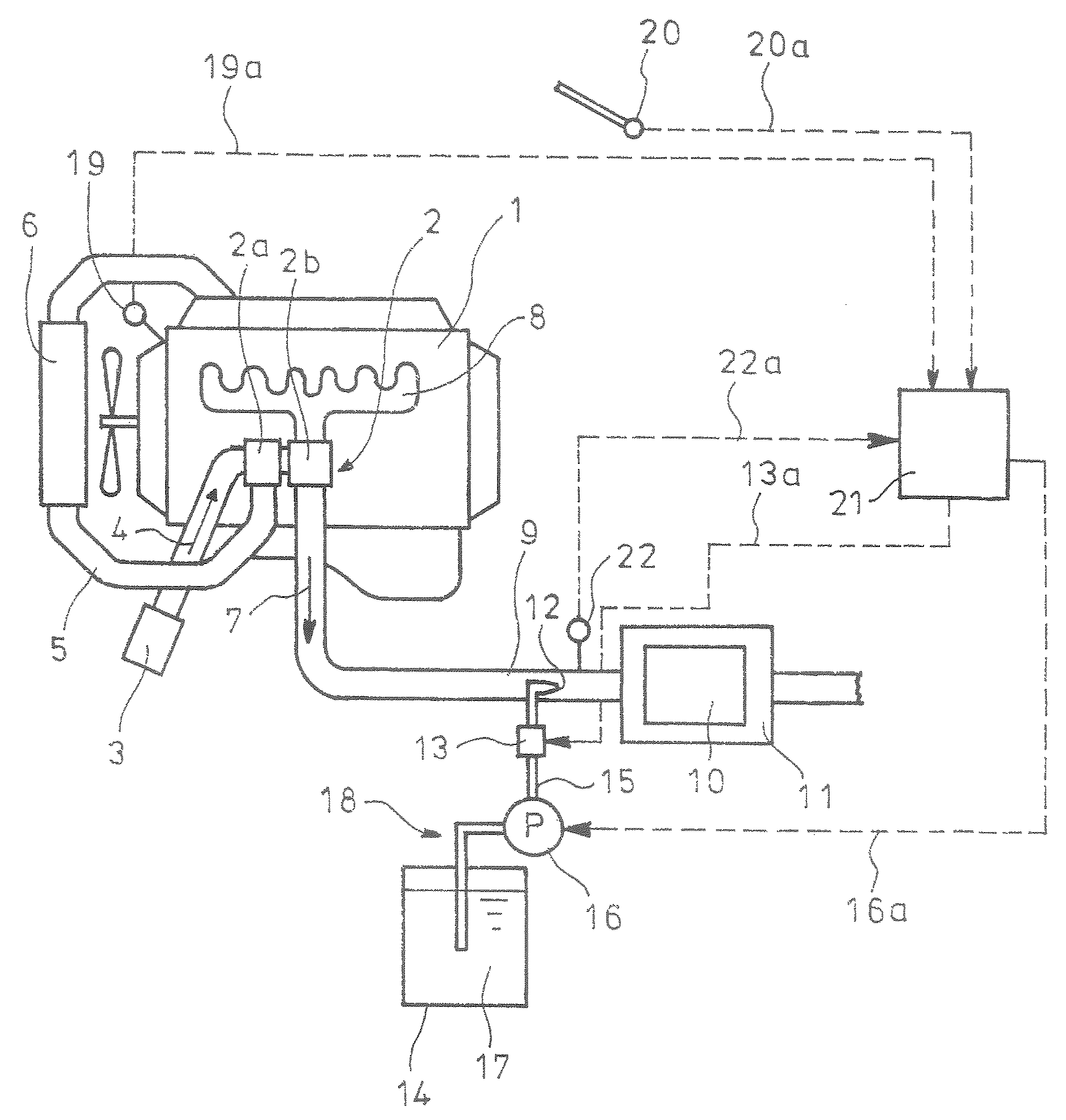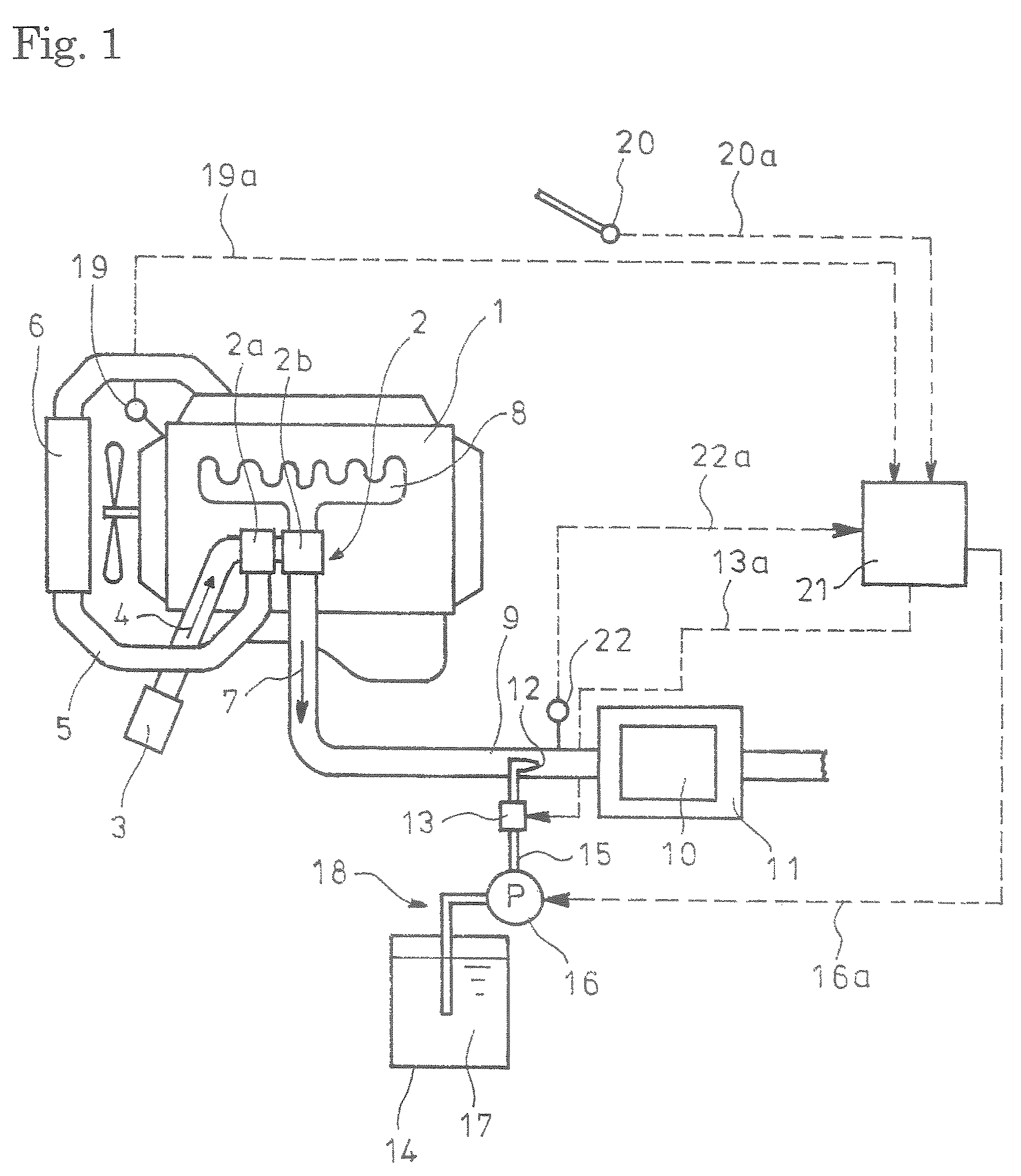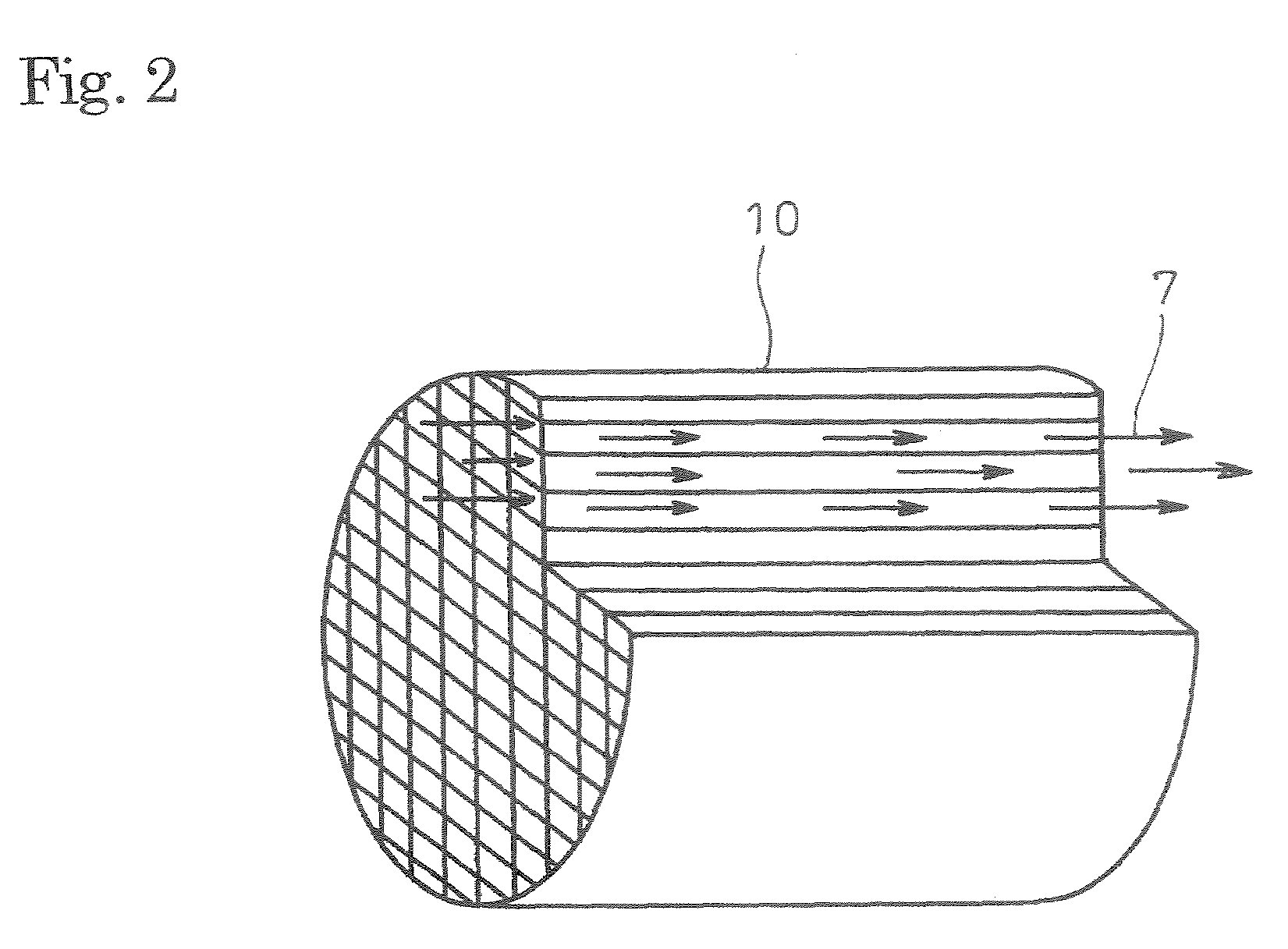Method for controlling exhaust emission control device
a technology of exhaust emission control and control device, which is applied in the direction of exhaust treatment electric control, separation process, instruments, etc., to achieve the effect of more accurate control of the amount of reducing agent and high accuracy
- Summary
- Abstract
- Description
- Claims
- Application Information
AI Technical Summary
Benefits of technology
Problems solved by technology
Method used
Image
Examples
Embodiment Construction
[0028]An embodiment of the invention will be described in conjunction with the drawings.
[0029]FIGS. 1-3 show the embodiment of the invention. In FIG. 1 reference numeral 1 denotes a diesel engine. The engine 1 illustrated has a turbocharger 2 with a compressor 2a to which air 4 from an air cleaner 3 is fed via an intake air pipe 5. The air 4 thus pressurized in the compressor 2a is further fed to an intercooler 6 where it is cooled. The cooled air 4 from the intercooler 6 is guided to an intake manifold (not shown) to be introduced into each of cylinders in the engine 1.
[0030]Exhaust gas 7 discharged from each of the cylinders in the engine 1 is fed via an exhaust manifold 8 to a turbine 2b of the turbocharger 2. The exhaust gas 7 thus having driven the turbine 2b is discharged via an exhaust pipe 9 to outside of the vehicle.
[0031]Incorporated in the exhaust pipe 9 through which the exhaust gas 7 flows is selective reduction catalyst 10 carried by a casing 11. The catalyst 10 is for...
PUM
| Property | Measurement | Unit |
|---|---|---|
| temperature | aaaaa | aaaaa |
| temperature | aaaaa | aaaaa |
| volume ratios | aaaaa | aaaaa |
Abstract
Description
Claims
Application Information
 Login to View More
Login to View More - R&D
- Intellectual Property
- Life Sciences
- Materials
- Tech Scout
- Unparalleled Data Quality
- Higher Quality Content
- 60% Fewer Hallucinations
Browse by: Latest US Patents, China's latest patents, Technical Efficacy Thesaurus, Application Domain, Technology Topic, Popular Technical Reports.
© 2025 PatSnap. All rights reserved.Legal|Privacy policy|Modern Slavery Act Transparency Statement|Sitemap|About US| Contact US: help@patsnap.com



